Record-Setting Travelers Championship Nets $2 Million for Charity
/The 2018 Travelers Championship generated $2 million for more than 150 local charities throughout the region, the largest amount for charity generated in the history of Connecticut’s premier sporting event. The record-setting total includes a $200,000 contribution from three-time Travelers Championship winner and 2018 champion Bubba Watson. Charity representatives joined officials from Travelers and the tournament in Hartford this week for the annual Travelers Championship Charity Celebration, where funds were distributed to each organization.
“This is always a special day because it signifies the hard work everyone puts into the tournament,” said Travelers Championship Tournament Director Nathan Grube. “Through the support we receive from volunteers, fans, players and businesses, we’re able to help charitable groups across the region mak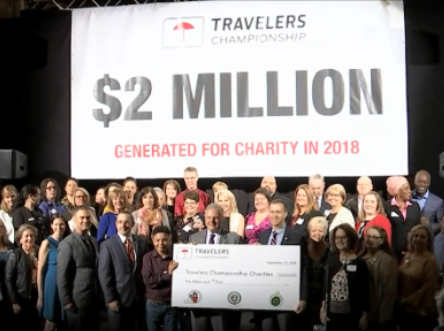 e the community a better place.”
e the community a better place.”
This year’s effort brings the total amount generated for charity by the tournament to more than $16.7 million since Travelers became title sponsor in 2007. The tournament donates 100 percent of its net proceeds to charity.
“Reaching the $2 million mark is an important milestone, and it will have such a meaningful impact on so many local organizations,” said Andy Bessette, Executive Vice President and Chief Administrative Officer at Travelers. “Bubba’s generosity mirrors our charity-first approach, and follows a similar sentiment that runs through the PGA TOUR and many of its players.”
Watson, who became just the second player to win the Travelers Championship more than twice – he also won in 2010 and 2015 – is representing the United States this week at the Ryder Cup in France. He recorded a video message that was played during the Charity Celebration.
“Wish I could be there. I just want to say thank you to Travelers for their hard work and their dedication to the community and all the charity dollars they’ve raised over the years,” Watson said. “Especially this year; $2 million dollars, what an achievement.”
The Hole in the Wall Gang Camp was the primary beneficiary of this year’s tournament, with three campers also serving as honorary co-chairs. Watson directed his $200,000 donation to Camp, which is naming the trading post at the Travelers Mini Golf Course on its campus in Ashford, Connecticut, as “Bubba Watson’s Trading Post,” in recognition of the 12-time PGA TOUR winner.
Back in December, the 2017 Travelers Championship was honored by the PGA TOUR winning the prestigious “Tournament of the Year” award, along with recognition as the “Most Fan-Friendly Event,” “Best Sales” and the inaugural “Players Choice.” Award. With approximately 4,000 volunteers working over 80,000 hours, the 2017 event generated more than $1.7 million for 165 deserving charities – totals that were exceeded this summer at the 2018 tournament. 
An economic impact study last year found that The Travelers Championship has an annual economic impact on the state of Connecticut of $68.2 million. The study, conducted by the Connecticut Economic Resource Center, Inc. (CERC), found that the economic impact had more than doubled between 2011 and 2017, due to two primary factors; a much larger total number of spectators, especially the increased number of individuals from outside the state, and increased spending by the tournament in preparing for and administering the increased number of events that occur during the tournament week.
At least 750 charities have benefited over that time. Since the tournament’s debut in 1952, more than $40 million has been distributed to local charities.
Never an effort to reset on its laurels, preparation has already started for the 2019 Travelers Championship, which will be held June 17-23 at TPC River Highlands.






 The Hartford Marathon will mark its 25th running on October 13, 2018. The 2018 Travelers Championship, will be held June 18-24 at TPC River Highlands in Cromwell. The Connecticut Open, at the Connecticut Tennis Center at Yale, will be held August 17-25 in 2018.
The Hartford Marathon will mark its 25th running on October 13, 2018. The 2018 Travelers Championship, will be held June 18-24 at TPC River Highlands in Cromwell. The Connecticut Open, at the Connecticut Tennis Center at Yale, will be held August 17-25 in 2018. CERC first conducted an impact analysis of the tournament in 2011, and completed another impact analysis for the Travelers Championship in 2017. The results were compared, to look at the changes over time and factors that may have influenced changes in the tournament’s economic effects.
CERC first conducted an impact analysis of the tournament in 2011, and completed another impact analysis for the Travelers Championship in 2017. The results were compared, to look at the changes over time and factors that may have influenced changes in the tournament’s economic effects.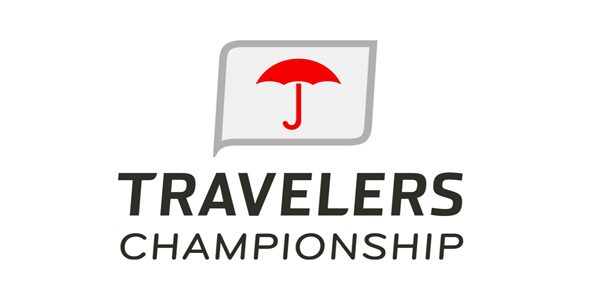 With record attendance, sales and fan engagement, the 2017 Travelers Championship raised the bar across the board through a strategic approach that focused on providing a first-class experience for fans, players, sponsors, volunteers and charity, officials pointed out. This marks the first time that the Travelers Championship has been recognized as “Tournament of the Year.”
With record attendance, sales and fan engagement, the 2017 Travelers Championship raised the bar across the board through a strategic approach that focused on providing a first-class experience for fans, players, sponsors, volunteers and charity, officials pointed out. This marks the first time that the Travelers Championship has been recognized as “Tournament of the Year.”
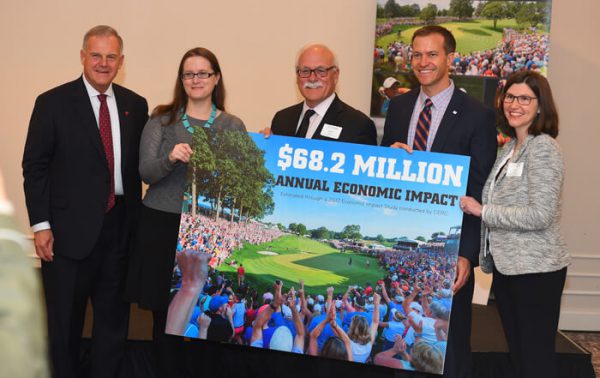

 On the Southern Connecticut State University Owls, a Division ll men’s basketball team, five Connecticut student- athletes have made their way onto the 13 player
On the Southern Connecticut State University Owls, a Division ll men’s basketball team, five Connecticut student- athletes have made their way onto the 13 player 
 A synthetic turf study was undertaken in 2016 by four United States agencies — EPA, Consumer Products Safety Commission, the Centers for Disease Control and Prevention/Agency for Toxic Substances and Disease Registry — which has yet to be finalized.
A synthetic turf study was undertaken in 2016 by four United States agencies — EPA, Consumer Products Safety Commission, the Centers for Disease Control and Prevention/Agency for Toxic Substances and Disease Registry — which has yet to be finalized. Blumenthal first became concerned about the artificial surface when his children were playing on the crumb-rubber athletic fields. “I became concerned as a parent, as much as a public official, ten years ago, and at first was somewhat skeptical, but now very firmly believe that we need an authoritative, real study about what’s in these fields,” Blumenthal told ABC News two years ago.
Blumenthal first became concerned about the artificial surface when his children were playing on the crumb-rubber athletic fields. “I became concerned as a parent, as much as a public official, ten years ago, and at first was somewhat skeptical, but now very firmly believe that we need an authoritative, real study about what’s in these fields,” Blumenthal told ABC News two years ago.
 iven the nation’s key public health target of limiting added sugars in children’s diets, flavored milk has come under scrutiny in the context of school nutrition, UConn Today recently reported.
iven the nation’s key public health target of limiting added sugars in children’s diets, flavored milk has come under scrutiny in the context of school nutrition, UConn Today recently reported.
 The index publication is supported by the Anthem Blue Cross and Blue Shield Foundation. It is a scientific snapshot of the health and fitness status at a metropolitan level using data made up of personal health, community and environmental factors.
The index publication is supported by the Anthem Blue Cross and Blue Shield Foundation. It is a scientific snapshot of the health and fitness status at a metropolitan level using data made up of personal health, community and environmental factors.
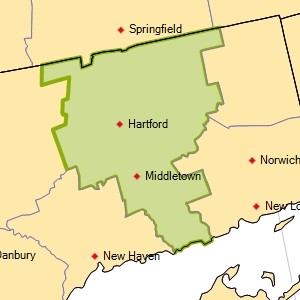 The region’s personal health rank was 13; its community/environmental indicators rank was 25, leading to an overall ranking of 13th. The analysis points to “Areas of Excellence,” in the region, including:
The region’s personal health rank was 13; its community/environmental indicators rank was 25, leading to an overall ranking of 13th. The analysis points to “Areas of Excellence,” in the region, including: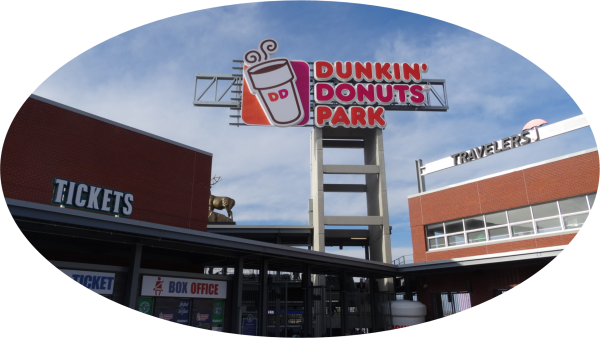
 Dunkin’ Donuts Park is the first brand new venue to open in the Eastern League since Northeast Delta Dental Stadium—home of the New Hampshire Fisher Cats—opened its doors in 2005, and it is seen as the biggest change to the league’s facility landscape since the extensive multi-phase renovation to the Harrisburg Senators’ FNB Field was completed prior to the 2010 season.
Dunkin’ Donuts Park is the first brand new venue to open in the Eastern League since Northeast Delta Dental Stadium—home of the New Hampshire Fisher Cats—opened its doors in 2005, and it is seen as the biggest change to the league’s facility landscape since the extensive multi-phase renovation to the Harrisburg Senators’ FNB Field was completed prior to the 2010 season.























